Huckleberry Hill Reservoir
----
Pumping Station, 1905.
(Courtesy Duke Rare Book and Manuscript Collection - Scanned by Digital Durham)
Increasing demand for water in the city of Durham during the 1870s and 1880s prompted the city to enter into a contract with A.H. Howland of Boston to establish a water infrastructure/pumping system sufficient to provide pressure capable of producing 10 streams of water, each 100 feet high, from 10 fire hydrants. The city signed a 30 year contract with the company, with the proviso that equipment and installation would be approved by a city engineer.
In 1886-1887, Howland and WF Ellis, along with 75 laborers and 2 blacksmiths constructed a 100 foot dam across the Eno River at the point Nancy Rhodes Creek empties into the river. The pond formed behind the dam would hold 6 million gallons of water. A pumping station would pump water from the river up to a reservoir 8300 feet away atop Huckleberry Hill. This 3 million gallon reservoir would gravity feed the city of Durham.
The Durham Water Company was formed in November 1886 to operate and maintain the water system. Eugene Morehead was president, WW Fuller was the attorney, Howland and Ellis the managers.
Plan of the waterworks, 1887. Get a full size view from Digital Durham, by clicking here.
(Courtesy Duke Rare Book and Manuscript Collection - Scanned by Digital Durham
The water system was a repeated source of problems. Howland and the city disputed the size of the water pipe to be installed, and after numerous delays, the city agreed to accept the water system in April 1888, despite the fact that it had failed to meet the benchmarks demanded by the contract.
Citizens lodged ongoing complaints about water pressure and inconsistent service. The company went into receivership over lawsuits from the McNeal Pipe and Foundry company, who had not been paid for their work. Fires that destroyed numerous in-town businesses in 1894 and 1895 demonstrated that the company's water supply was insufficient for firefighting. Howland resigned from management of the company, and John C. Michie replaced him. Michie found muddy water containing dead fish in the reservoir, and began work to replace filtration systems and cement the reservoir bottom.
The water company went into receivership again in 1898, owing various parties $194,000. The city entered a new contract with John D. Hardy of Boston to run the water service, but conditions were little improved.
Same view as above, 1905, in a colorized postcard version.
(Courtesy Duke Rare Book and Manuscript Collection - Wyatt Dixon Collection)
Sanborn Map of the Pumping Station, 1913
After the major fire of 1914, the city purchased the entirety of the system in 1916. The city decided at that point to establish the Flat River as its primary water supply and began planning the Lake Michie dam.
Pumping station on the Eno, 1917.
(Courtesy Durham County Library)
Concrete being added to the bottom of the Huckleberry Hill Reservoir.
The construction of the reservoir and filtration system at Hillandale Road followed soon thereafter, that same year.
The Eno pumping station and Huckleberry Hill reservoir continued to be used as a backup system for some undetermined period after the Hillandale plant was established, but eventually all production was shifted to the Lake Michie/Hillandale systems, and the old water system on the Eno was seemingly abandoned.
Interestingly, the idea of an Eno reservoir resurfaced by the 1960s - I'm not sure where the proposed location of the Eno dam was. The Eno River Association was formed in 1966 to combat the idea of damming (and damning) the Eno. They managed to beat back this proposal, and the city would eventually dam the Little River at Orange Factory instead. The Eno River State Park was formed in 1973.
One of the trails in Eno State park is the Pump Station trail, which takes you by the ruins of the old pumping station. Ruins plus a nature hike is my kind of adventure.
I scaled the hill east of the pumping station to try to recreate the historic view above. Trees prevented the same view, but the below shot is a rough approximation.
08.08.09
Further west is the stone foundation of the pumping station, visible in the historic photos above.
08.08.09
The ruins of the filter room are off in the woods to the south.
08.08.09
I didn't realize until a reader emailed me a query that the old reservoir on top of Huckleberry Hill was still around. It's hard to get to, with a tall chain-link fence/barbed wire around it. The site appears to be used for telephone equipment/cell phone tower as well. But you can see the stone steps leading to the top of the reservoir in this shot. (Which I took over my head, poking my lens through the barbed wire.)
Reservoir, off of Berini Drive, 08.29.09
Find the old Pumping Station on a Google Map.
Find the old Reservoir on a Google Map.
36.062461,-78.962498
36.03939,-78.958976

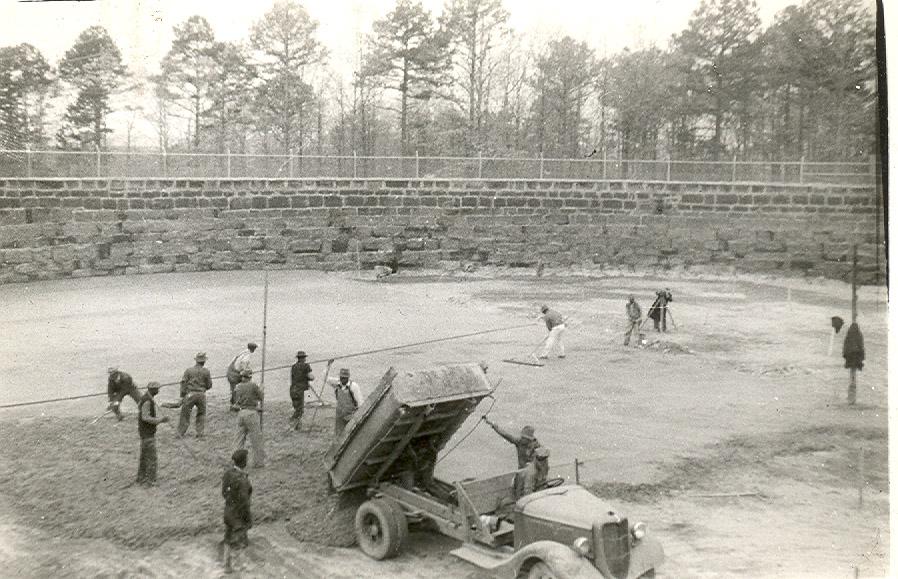
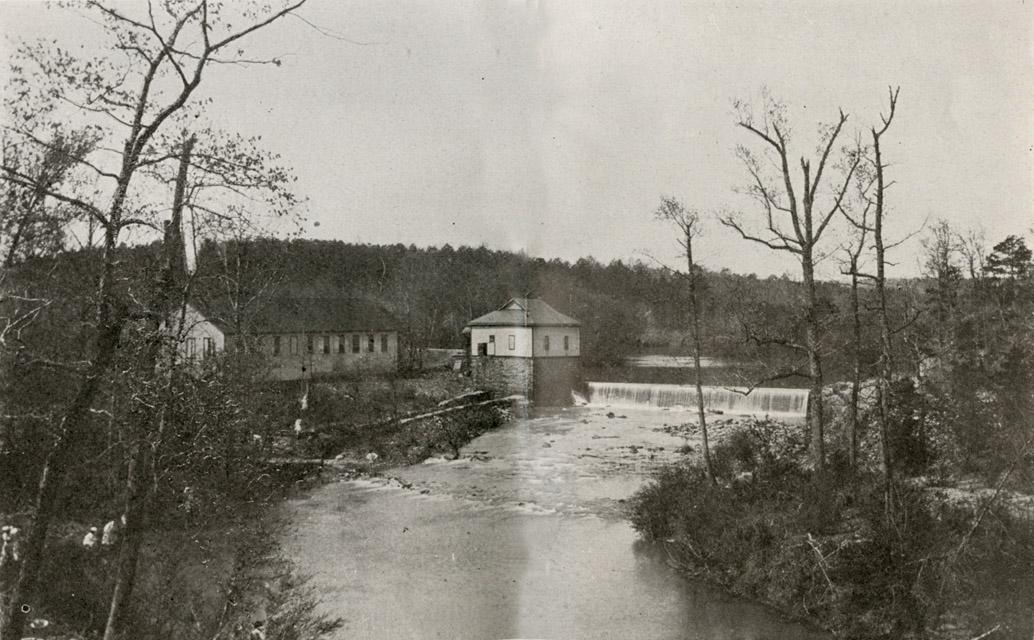
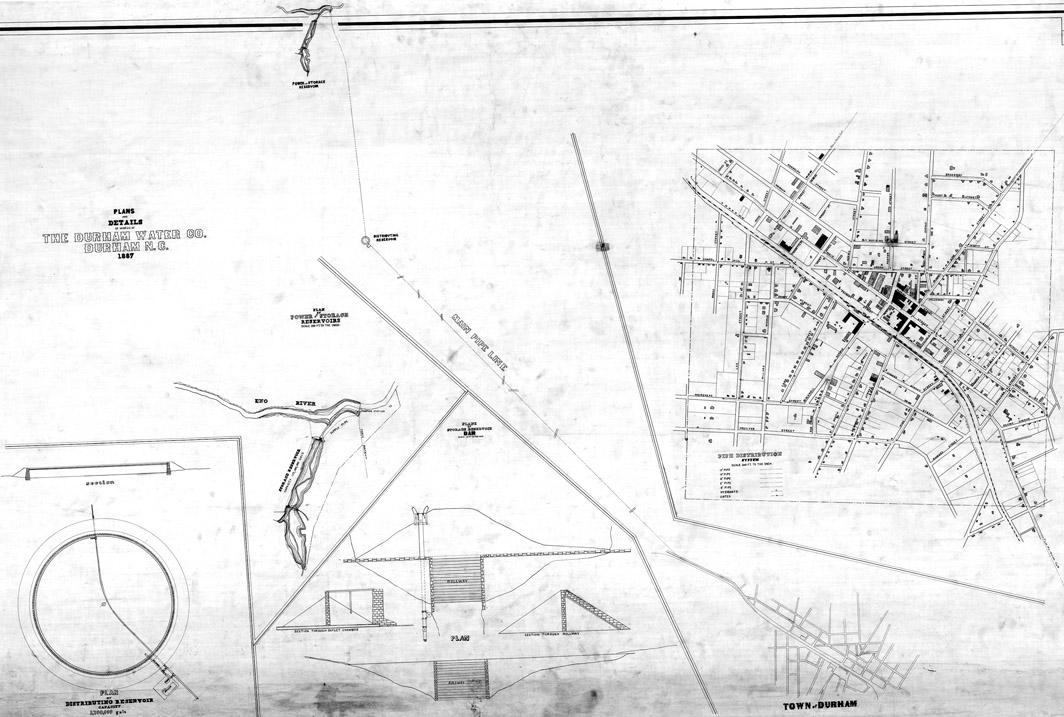
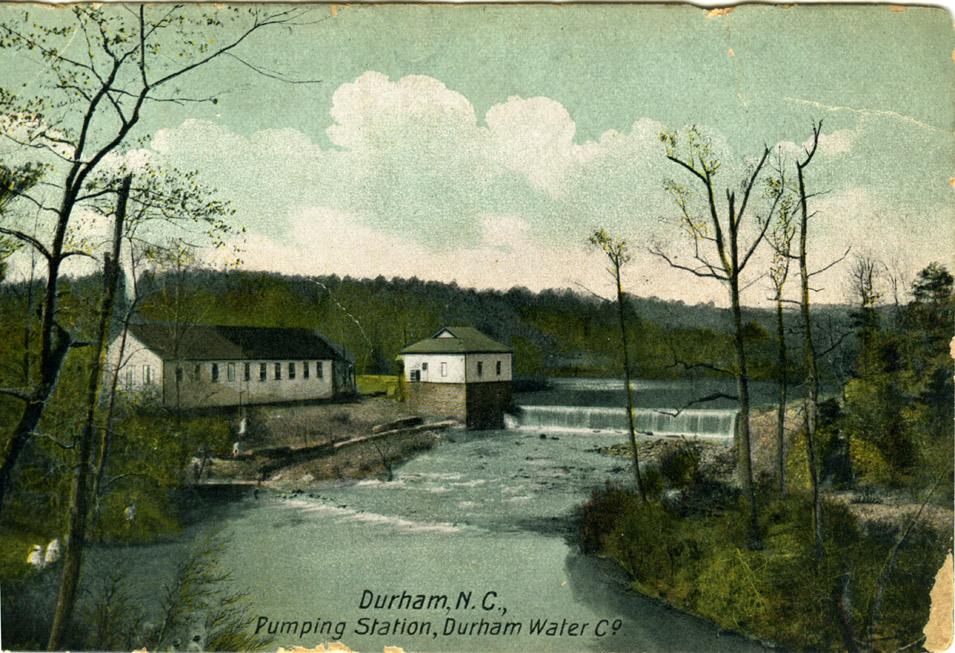
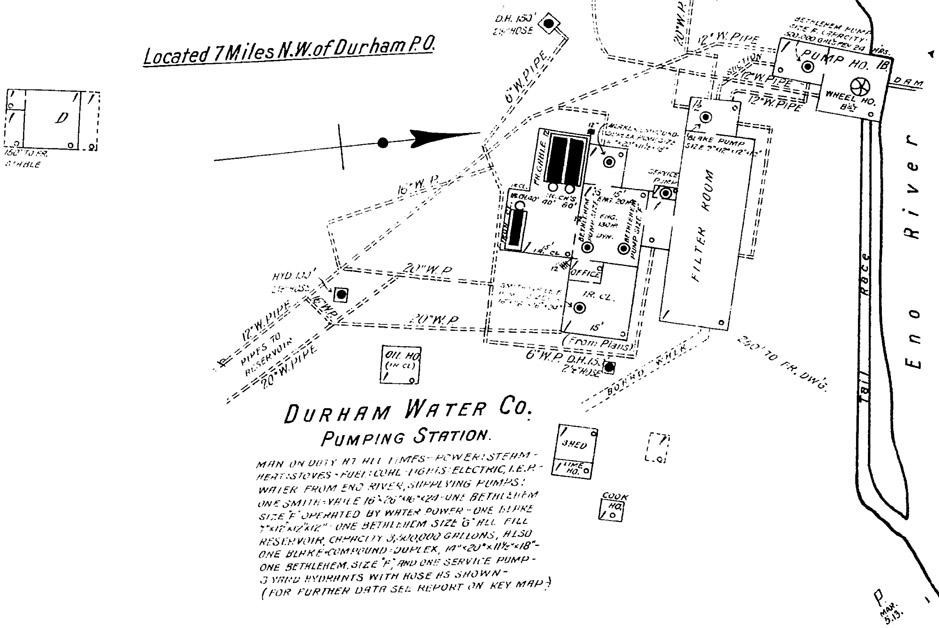
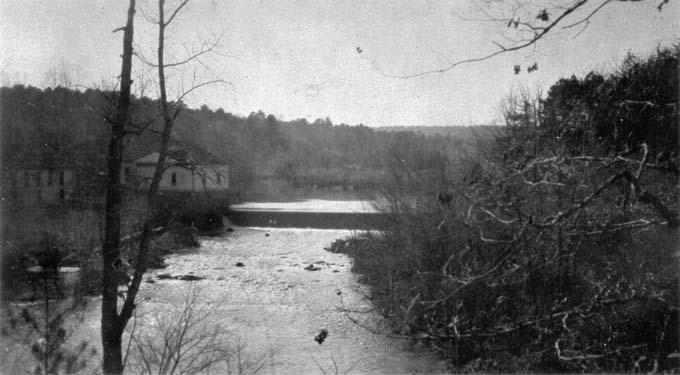
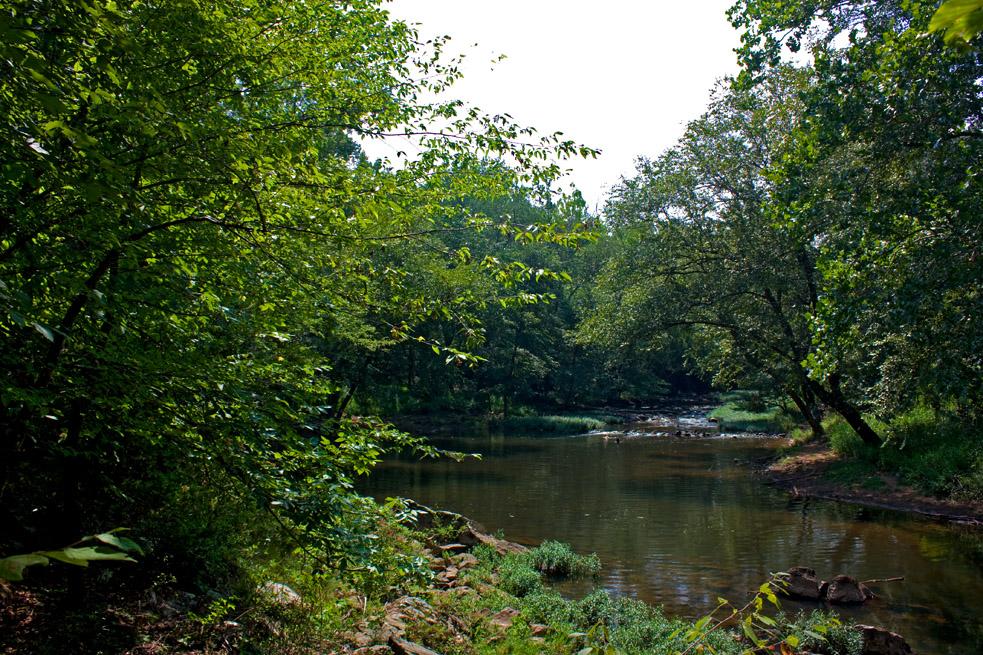
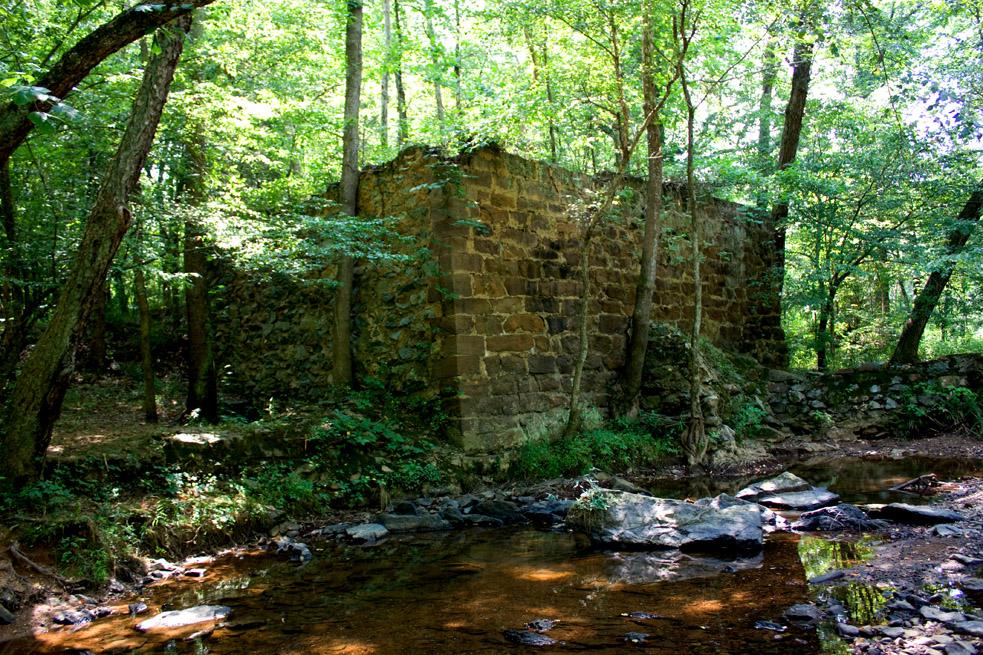
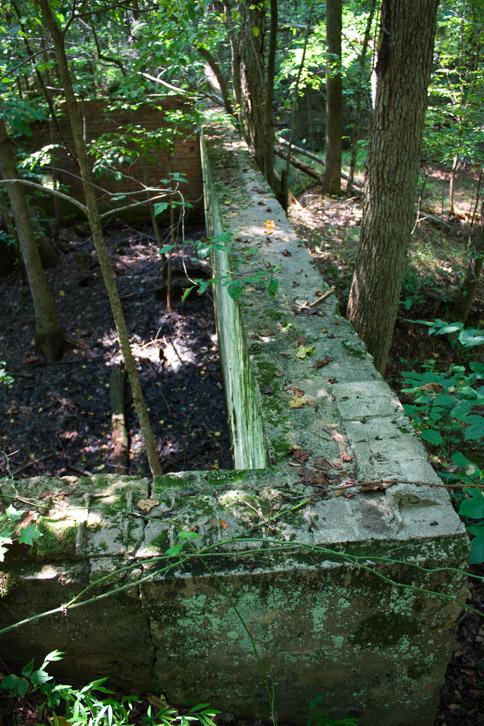
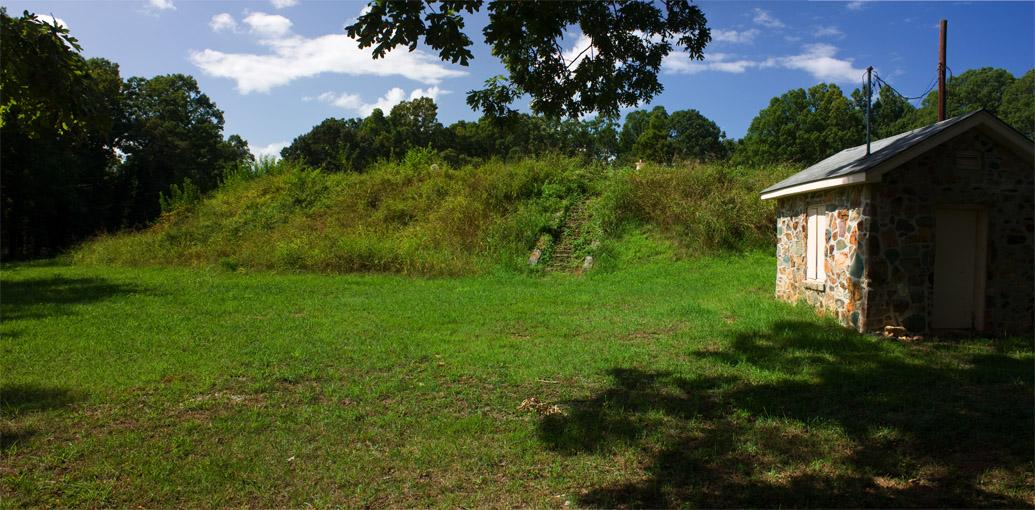
Comments
Submitted by Gary Thompson (not verified) on Sun, 3/3/2013 - 3:51am
Not only is the Huckleberry storage tank still around, it is still in use, storing finished water for the City of Durham. The fence is there not only to protect the communications equipment, but the City Water Supply from possible contamination.
Submitted by OurHuckleHome on Sat, 8/12/2023 - 11:12pm
In reply to Not only is the Huckleberry storage tank still aro by Gary Thompson (not verified)
Could you please tell me where to find the picture of the Huckleberry Hill reservoir?
Add new comment
Log in or register to post comments.